Jobs hangover from coronavirus revealed by Treasury secretary Steven Kennedy
The unemployment rate isn’t expected to fall below 6 per cent for up to five years, the Treasury chief warns in a secret briefing.
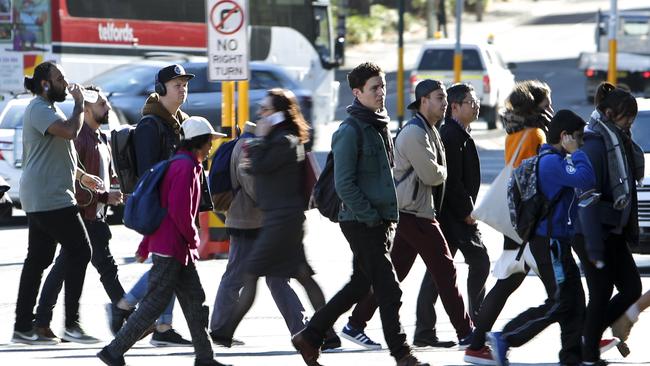
Treasury head Steven Kennedy has confidentially warned business and union leaders unemployment is expected to remain significantly above its pre-pandemic levels for four or five years and the impact of the economic crisis will hit younger workers the hardest.
The Treasury secretary, in an economic update to five key workplace reform groups negotiating measures to drive the post-COVID-19 recovery, warned that the unemployment rate was not expected to fall below 6 per cent for four to five years.
In the confidential overview of labour market conditions provided on Tuesday via video link, Dr Kennedy labelled youth unemployment as the “defining feature” of the COVID-19 economic shock.
An unemployment rate of 6 per cent in five years — nearly a percentage point higher than in early 2020 before the virus caused mass economic shutdowns — would produce jobless queues up to 120,000 people longer than before the coronavirus outbreak with close to 900,000 people out of work. The forecast from the Treasury secretary in his briefing with business and union figures came two days before the number of unemployed Australians was shown to have breached one million for the first time.
Australian Bureau of Statistics figures released on Thursday showed the official unemployment rate edging up to 7.5 per cent in July, as a tide of jobseekers reconnecting with the workforce swamped another solid month of employment growth.
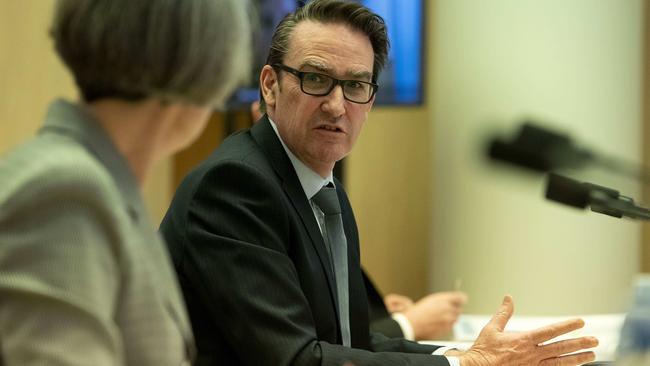
An extra 114,700 Australians found employment over the month, following a gain of 252,000 in June as the economy reopened. Australia has clawed back about 40 per cent of the 872,000 plunge in employment triggered by the shutdowns in April and May.
The latest figures do not factor-in the strict stage-four lockdown imposed in greater Melbourne.
Dr Kennedy said the second shutdown meant Treasury was not expecting the economic recovery to start until later in December.
He warned that the key demographic affected by the economic crisis would be 20 to 29-year-olds. He used slides — seen by The Australian — to show payroll job losses for this group running at about 14 per cent in mid-April before recovering to about 8 per cent by July 11.
With the labour force participation rate climbing to 64.7 per cent from 64.1 per cent, the jobless rate on Thursday drifted higher to 7.5 per cent — up from 7.4 per cent in June, according to the ABS’s seasonally adjusted figures.
Unemployment is running at its highest rate since the late 1990s, but still well below the 11.2 per cent peak experienced during the recession earlier that decade.
The underemployment rate — those who were working some hours but said they wanted to work more — fell to 11.2 per cent from 11.7 per cent in June.
The labour force survey was conducted between June 28 and July 11, but experts warned that Victoria’s second lockdown would have since taken a heavy toll on jobs and economic activity.
ANZ senior economist Catherine Birch said: “Unfortunately, Victorian employment is likely to fall sharply in August and September, especially with the move to stage-four restrictions. While Victorian workers and businesses will suffer the worst of the impact, employment elsewhere in the country will also be affected.”
Dr Kennedy told the five industrial relations working groups the effective unemployment rate was running at 10 per cent and the regions hardest hit by job losses were CBDs and areas that normally received large numbers of tourists.
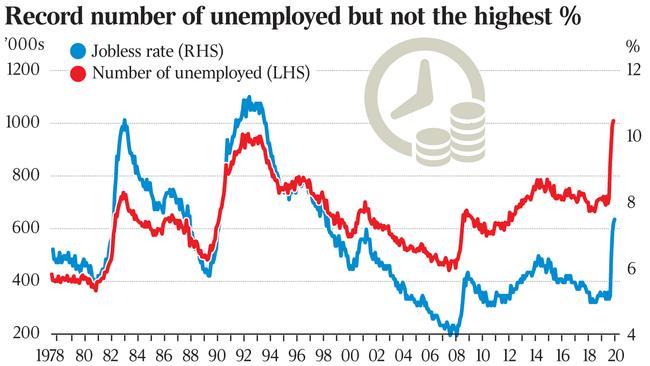
Treasury has previously sounded the alarm on the impact of the economic crisis on the young. It released a paper last month warning that a five-percentage-point rise in the youth unemployment rate was associated with earnings declines of 8 per cent for young Australians. It forecast that this decline in earnings would reduce to about 3.5 per cent after a further five years.
Treasury has also provided updated forecasts of a $10bn-$12bn combined hit from the stage-three and four restrictions in Victoria, subtracting 2.5 percentage points from GDP growth in the current quarter.
Employment Minister Michaelia Cash said the “effective” rate of unemployment — including those working zero hours but on JobKeeper, and those who have left the workforce — dropped to 9.9 per cent in July, from 11.7 per cent. Senator Cash said the recovery evident in the latest jobs figures was testament to the “resilience” of the economy. “What today’s figures show yet again is that, with the easing of restrictions … you will see jobs returning,” she said. “But we’re not blind to the fact that next month the figures for Victoria, because of the stage-four lockdowns, are not going to be good.”
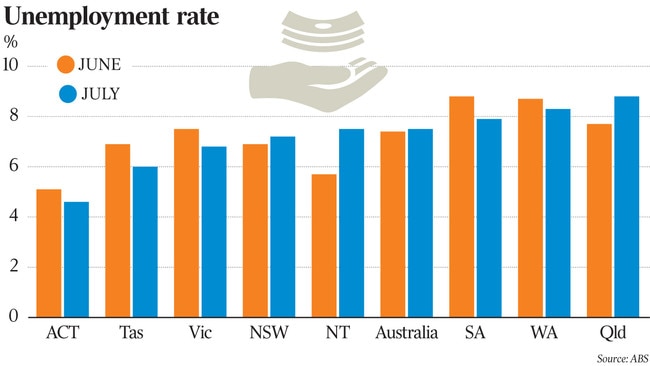
Victorian Premier Daniel Andrews has said his state’s tougher restrictions implemented from August 5 would result in 250,000 Victorians being stood down. The second wave of cases has already smashed business and consumer confidence and the Reserve Bank and Treasury now expect a deeper recession and delayed recovery.
Both are predicting the national economy will contract again in the September quarter, and that the jobless rate will hit close to 10 per cent by the end of the year.
Opposition Treasury spokesman Jim Chalmers again called on the government to put together a jobs plan to help combat elevated levels of unemployment, saying “Australians can’t afford a jobless recovery from this recession”.
Separate data released on Wednesday showed the COVID-19 shock had sent private wages backwards over the June quarter — the first fall in the history of the ABS series stretching back to 1997.
In his briefing, Dr Kennedy presented a graph showing some industries were worse off in mid-July than three months earlier, with payroll job losses in construction rising to about 10 per cent.


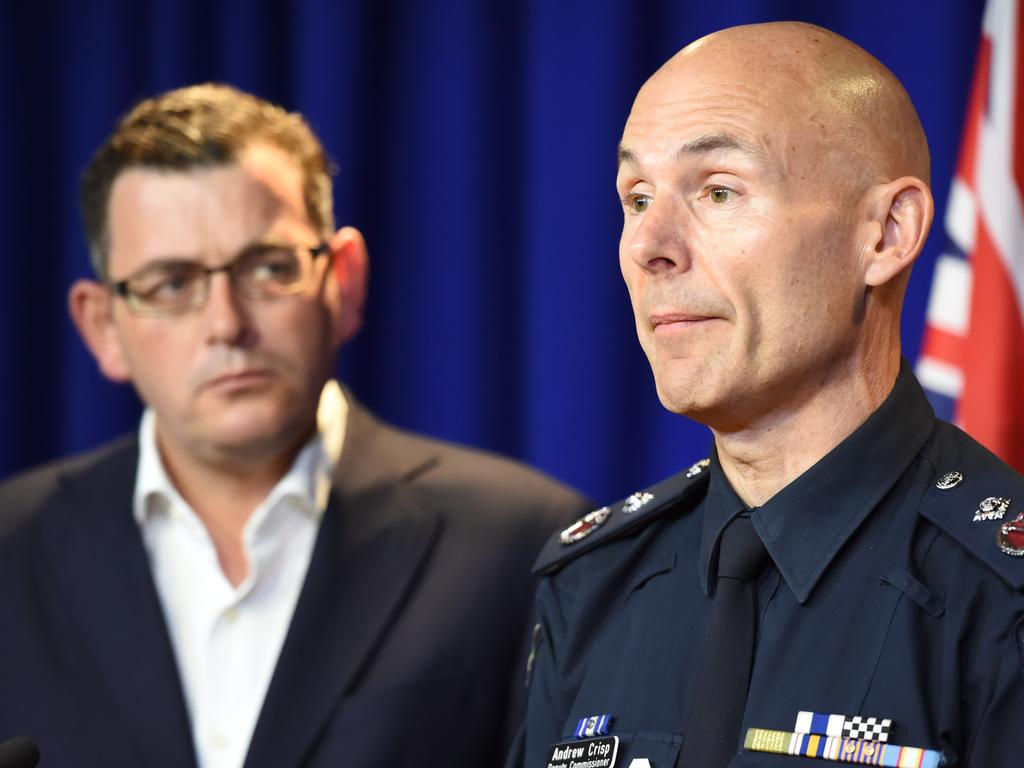
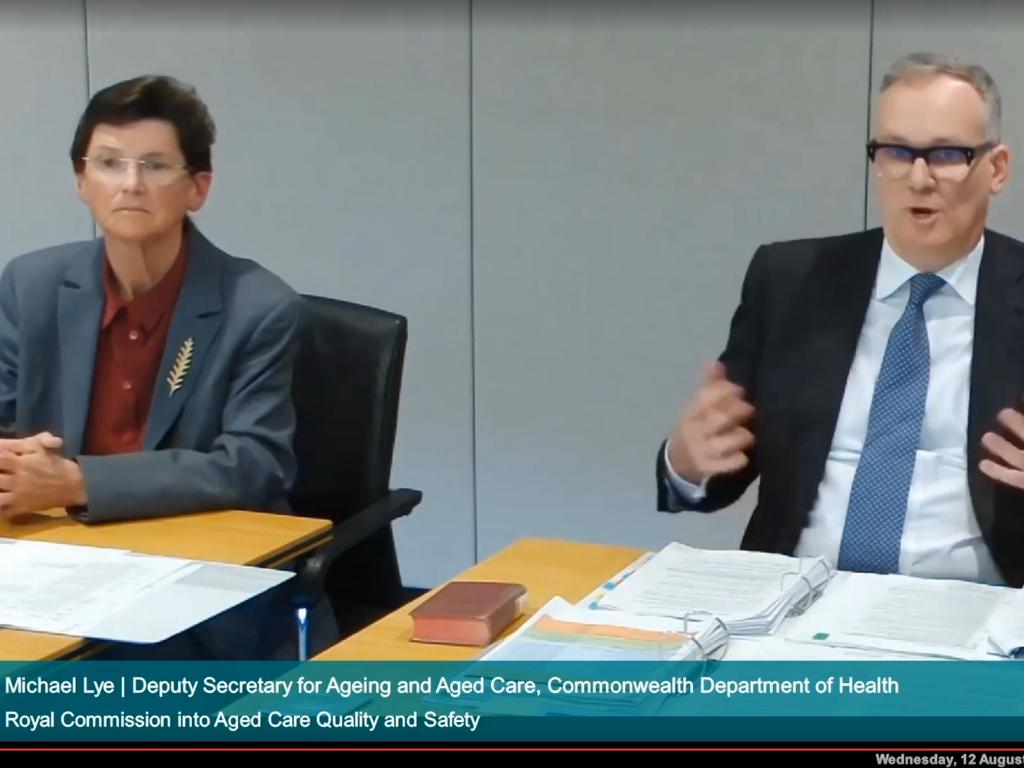


To join the conversation, please log in. Don't have an account? Register
Join the conversation, you are commenting as Logout